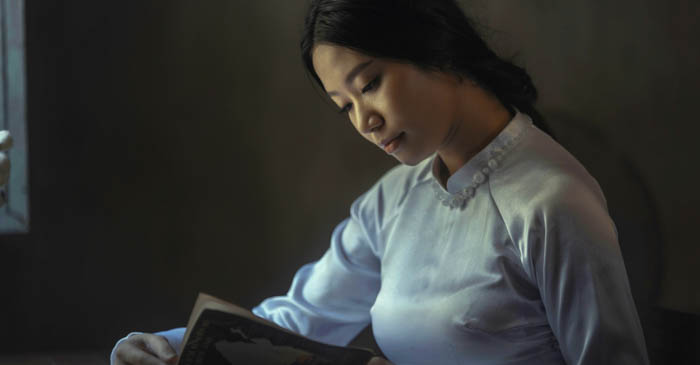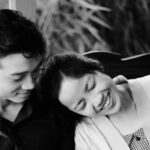
Looking for Patterns
My search for major trends in recent Korean American literature was initially cut short. Thinking that a decade would be a big enough time frame to provide me with the books I needed to work with, I began by looking at the time period from 2010 to 2020.
My initial assumption was wrong—but not because there weren’t enough books. On the contrary, as I started to catalog the books, too many of them quickly (and pleasantly) overwhelmed me. There is clearly no dearth of Korean American writers right now.
To limit the number of works I had to consider, I chose to look for books published by Korean American authors between 2016 and 2020. This seemed more reasonable, since I could see that the period from 2016 to 2020 was still a fruitful period of publication for Korean American authors, and the specific time span seemed like an interesting context from an American perspective.
So, what went on in Korean American literature during this time?
Three broad trends that I noticed were: an interest in confronting race in America; a growing presence of trans and queer Korean American authors; and a large and successful body of children’s literature.
Because there are overlaps among these three trends, they are not meant to be taken as mutually exclusive categories but as indicators of movement. I would also like to recognize that these three trends do not emerge from a vacuum, but from continuing conversations from both within and without Korean American literary history.
Authors Continue to Wrestle With American Racial Identities
American racial identities are not a new topic of consideration in Korean American literature. Even in Younghill Kang’s 1937 novel East Goes West, we see the protagonist Chungpa Han attempting to grapple with the strangeness of the American racial hierarchy from the perspective of a newcomer. Well, it’s now eighty-three years later, and as America has changed, race has changed, and Korean American literature has changed with them.
Barack Obama was still the president in 2016. As we make our way from then to the present, we pass through polarizing social change. Some instances include the rise of mass movements like #MeToo, Black Lives Matter, the Dakota Access Pipeline protests at Standing Rock, and white supremacist groups; the increasing visibility of police brutality against Black people through social media; and the growing xenophobic and anti-immigrant sentiments seen through events like Trump’s promises to build a border wall, the Muslim travel ban, and the increase of anti-Asian prejudice during COVID-19. The racial gravity of these events has not gone unnoticed by Korean American authors working in all literary genres.
Though they represent different political perspectives, recent essay collections by Korean American authors have been notable for engaging with gender and sexuality in tandem with Asian American racial politics. Wesley Yang’s 2018 essay collection The Souls of Yellow Folk considers race in contemporary America and its effects on disaffected Asian American masculinities. Alexander Chee’s 2018 essay collection How to Write an Autobiographical Novel charts the author’s evolving thoughts on literature and politics as a gay mixed-race Korean American man. In Cathy Park Hong’s 2020 essay collection Minor Feelings: An Asian American Reckoning, the author combines incisive theorization with personal stories to target the tricky space that Asian Americans occupy in America’s racialized and gendered consciousness.
In fiction, Korean American authors have taken up race as a central theme to examine at many different levels. The two short story collections Swimming in Hong Kong (2017) by Stephanie Han and The Prince of Mournful Thoughts and Other Stories (2020) by Caroline Kim frame Asian American racial formation in international, global contexts. At a closer scale, two novels deal specifically with race in Los Angeles: Steph Cha’s novel Your House Will Pay (2019) deals with the relations between Black and Korean communities in Los Angeles, and Nancy Jooyoun Kim’s novel The Last Story of Mina Lee (2020) considers intergenerational trauma and Korean American immigrant experiences in LA’s Koreatown. Taking on the psychological effects of Asian American stereotypes with an allegorical approach, Matthew Salesses’s novel Disappear Doppelgänger Disappear (2020) novelizes an Asian American search for individual identity in an America teeming with racism.
Memoirs by Korean American authors have expanded the discourse on Asian American identities through lenses provided by intimate personal accounts. In Nicole Chung’s All You Can Ever Know: A Memoir (2018), the Korean adoptee author writes about the development of her racial consciousness and her search for her birth family. Mary-Kim Arnold’s lyric essays in Litany for the Long Moment (2018) weave together discussions of art with Arnold’s personal journeys as a Korean adoptee artist. In E.J. Koh’s The Magical Language of Others: A Memoir (2020), a Korean American girl comes of age in California as her parents live in South Korea. Celebrity chef David Chang ties discussions of Asian American racial identity and mental illness into his experiences as a restaurateur in his memoir Eat a Peach (2020).
On the levels of lyric and language, recent poetry by Korean American authors has dug into the historical, linguistic, and symbolic mechanics underpinning racial identities in the US. Emily Jungmin Yoon’s A Cruelty Special to Our Species: Poems (2018) puts the history of “comfort women” into conversation with considerations of racialized and gendered oppression in the US. Julayne Lee’s hybrid text Not My White Savior: A Memoir in Poems (2018) questions the narrative that transnational adoptees are given a better life through their adoptions. Franny Choi’s Soft Science (2019) rethinks the boundaries between humans and machines as they relate to race, gender, and sexuality. In Su Hwang’s Bodega (2019), the poet ruminates on the interactions that take place among people of all different ethnicities and races in the Queensbridge projects.
In these works, Korean American authors have participated in the contemporary intellectual, literary, and political conversations going on among Asian American thinkers. They have also thought through the past and current transracial and transnational relationships that inform their racial identities. Through these contributions, they have demonstrated their continuing engagement with racial politics in America.
Trans and Queer Authors Make Their Mark
It was not too long ago that “LGBTQ Korean American literature” was nearly interchangeable with “works by Willyce Kim and Alexander Chee.” It’s also still not uncommon to hear surprise when somebody learns that literature by trans and queer Korean American authors even exists. It has taken some time, but other openly LGBTQ authors have gradually joined the ranks of the few published authors like Kim and Chee, increasing the visibility of LGBTQ Korean Americans and providing new perspectives.
Given this context, the period of time between 2016 and 2020 seems to be a significant moment. In this relatively short span of time, trans and queer Korean American authors have published an impressive amount of new reading material. In doing so, they have made space for themselves while shifting the Korean American literary corpus at large.
Author Yoon Ha Lee was particularly prolific over this period of time. He published three novels from 2016 to 2018 as installments of the military science fiction trilogy Machineries of Empire. Lee then followed that up with the middle grade book Dragon Pearl (2019), the collaborative sci-fi project The Vela (2019), the short story collection Hexarchate Stories (2019), another short story collection, The Candlevine Gardener and Other Stories (2020), and most recently, the novel Phoenix Extravagant (2020) (whew!).
Other published authors were also busy adding to their oeuvres. Alexander Chee published his second novel, Queen of the Night, in 2016; the essay collection How to Write an Autobiographical Novel in 2018; and the short story “The Weddings” in 2019. Poet Franny Choi published her second and third works—the chapbook Death by Sex Machine and the poetry collection Soft Science—in 2017 and 2019, respectively. Samuel Park’s third novel, The Caregiver, was published posthumously in 2018.
Several new authors published their debut novels during this period, greatly augmenting the number of trans and queer authors whose works we can read in the present and anticipate in the future. James Han Mattson published The Lost Prayers of Ricky Graves in 2017; Patty Yumi Cottrell published Sorry to Disrupt the Peace in 2018; and R.O. Kwon published The Incendiaries in 2018.
In addition to these books, writing by trans and queer Korean American essayists and journalists has been appearing more and more frequently all over the internet and in major publications. It doesn’t seem like this movement will be slowing down anytime soon.
Authors of Children’s, Middle Grade, and Young Adult Books Surge
Between 2016 and 2020, there was an enormous amount of new publications by Korean American authors working in the fields of children’s, middle grade, and young adult books. By targeting younger audiences with stories that weave aspects of Korean culture and identities into their works, these authors not only increase the visibility of Asian and Korean Americans for all young people, but also critically provide Asian and Korean American youth with narratives that reflect their realities and help them cope with their unique struggles.
Many Korean American authors writing for younger audiences have incorporated traditional aspects of Korean culture into their works. The picture book No Kimchi for Me! (2017) by Aram Kim, the middle grade book Krista Kim-Bap (2018) by Canadian author Angela Ahn, and the middle grade title Mindy Kim and the Yummy Seaweed Business (2020) by Lyla Lee encourage their younger readers to embrace Korean food, and by extension, Korean culture. Meanwhile, Julie Kim’s picture book (2017), Ellen Oh’s spooky middle grade book Spirit Hunters (2017), Yoon Ha Lee’s middle grade sci-fi Dragon Pearl (2019), and Tae Keller’s middle grade title When You Trap a Tiger (2020) infuse vivid aspects of traditional Korean spirituality and into their stories for kids.
Other young adult books integrate newer aspects of Korean culture into their stories. Maurene Goo’s Somewhere Only We Know (2019), former Girls’ Generation member Jessica Jung’s book Shine (2020), Lyla Lee’s I’ll Be the One (2020), and Stephan Lee’s K-pop Confidential (2020) are all books that allow readers to imagine themselves in the glamorous and stressful world of K-pop. Also inspired by Korean pop culture, Maurene Goo’s I Believe in a Thing Called Love (2017) incorporates Korean dramas into the protagonist’s search for love.
Korean American authors have also written stories that provide younger Asian American readers with tools to navigate their lives as Asian Americans. The middle grade titles Unidentified Suburban Object (2016) by Mike Jung, Stand Up, Yumi Chung! (2020) by Jessica Kim, and Prairie Lotus (2020) by Linda Sue Park all teach young Asian Americans how to deal with the difficult issues of cultural conflict and racial prejudice while growing up. In the young adult realm, Frankly in Love (2019) by David Yoon and the graphic novel Almost American Girl (2020) by Robin Ha put into narrative the conflicts faced by Korean Americans coming of age in the US.
Centering Korean American characters in romance narratives, many Korean American authors wrote successful young adult romance books featuring Korean American main characters. These include Jenny Han’s Always and Forever, Lara Jean (2017), Maurene Goo’s The Way You Make Me Feel (2018), Mary H.K. Choi’s two works Emergency Contact (2018) and Permanent Record (2019), Jenny Lee’s Anna K: A Love Story (2020), and David Yoon’s Super Fake Love Song (2020).
Other middle grade books by Korean American authors show Korean American main characters navigating friendship—like Michelle Kim’s Running Through Sprinklers (2018) and Mike Jung’s The Boys in the Back Row (2020)—and school—like Patti Kim’s I’m Ok (2018), Tae Keller’s The Science of Breakable Things (2018), and Erin Yun’s Pippa Park Raises Her Game (2020).
Rounding out this section is the adorable Cat on the Bus (2016) by Aram Kim, a picture book about a homeless cat finding a home with an elderly Asian man.
From these many publications, Korean American authors writing for younger audiences have been recognized for their talents at entertaining and speaking to young people, and their ranks seem to be growing. These authors offer younger readers—whether they’re Korean American, Asian American, or neither—a wide array of books to explore as they search for their next book to fall in love with.
Where To Next?
The works mentioned above, while numerous, do not account for all the books published by Korean American authors from 2016 to 2020. There are other powerful, even award-winning books that unfortunately didn’t quite fit into these three trends. You can and should check them out if you’re interested.
As for other possible trends that can describe this period of time, there were some interesting smaller patterns that I noticed. Many Korean American authors have recently been inspired by reimagining Korea, often through lenses that explore historical and intergenerational traumas. Other common sources of recent literary inspiration have been math, science, and technology, notably in the field of poetry. In addition to these two schemes, I’m sure that there are many other ways of grouping and connecting works from this period that I just didn’t pick up on.
After all, there is so much to read. The number of Korean American authors now working on the literary landscape and finding considerable success is stunning. As they build upon the ground broken by Korean American and other authors published before them, they find new ways to challenge old narratives and converse with their contemporaries. If the past five years are any indication, there’s much to look forward to in Korean American literature.











